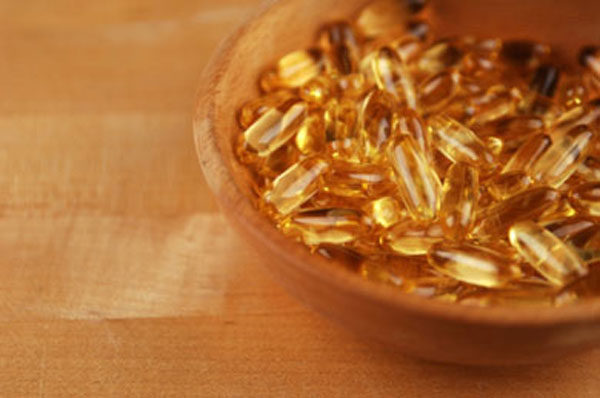Over the past few decades, the number of research articles on omega-3 fatty acids EPA (eicosapentaenoic acid) and DHA (docosahexaenoic acid) has grown to more than 9,000 (per this month’s Vitamin Connection column on page 52). And, that doesn’t even count the important published studies on other fatty acids like omega-3 alpha-linolenic acid (ALA) or omega-6 gamma-linolenic acid (GLA).
“Research on omega-3s and health began in earnest after they were established to be essential in 1981. There were only a few reports of their benefits before that time,” says Udo Erasmus, omega expert/innovator, author and formulator of Udo’s Oil 3-6-9 Blend from Flora Health, Lynden, WA. “Now, they are really hot.”
Scientific inquiries into the benefits of omega-3s began with heart health, and now health professionals can attest to its ability to promote joint health, skin health, mental health and other aspects of wellness.
Possibly the most exciting research studies of the year center on anti-aging, and tell us a lot about how fatty acids behave in the body. But, this hasn’t been the only important omega news of 2010. While positive headlines spoke of benefits, negative news questioned purity and sustainability. In this two-part feature, industry insiders react to both the encouraging and downbeat headlines about omegas.
The Inner Workings of Omegas
Earlier this year, researchers from San Francisco General Hospital published a study in JAMA indicating that fish oil has such beneficial effects on the body because of its interaction with telomeres (i.e., the fuses on the ends of chromosomes). When a cell divides and DNA replicates, the telomeres get shorter and shorter, eventually prohibiting DNA from replicating properly and the cell from living. Some believe telomeres are the key to understanding how the body ages.
The team found that study participants taking omega-3 fatty acids DHA and EPA had slower rates of telomere shortening over a five-year period than others (1). “This is relatively new research and has showed us much more complex mechanics of how we benefit from taking EPA and DHA—especially for those who consume too much vegetable oil and too little marine oils. EPA and DHA trigger the production of several compounds that have complex biological effects in our body,” says Baldur Hjaltason, business development and sales manager at EPAX AS, Aalesund, Norway.
A chief aspect of how omega-3s and -6s affect cellular health and DNA has to do with the cell membrane. “Genes do not turn themselves on,” says Herb Joiner-Bey, N.D., scientific advisor to Barlean’s Organic Oils, Ferndale, WA. The epigenome (the protein that surrounds DNA) allows cells to express themselves or prevents them from doing so. It receives information from cell membrane receptors through hormones and other environmental agents and is also affected by the fatty acids found on its surface, Joiner-Bey explains. “Thus, changing the fatty acid makeup of cell membranes can help determine whether DNA genes are expressed, including cancer genes. This effect is profoundly important and is at the leading edge of modern cell science and nutritional medicine,” he states.
Therefore, having enough fatty acids in one’s system keeps the cell membrane fluid and working properly. “If your cell membranes are not very fluid, there will be an impact on pretty much every physiological structure in the body, so you need the omega- 3s as well as the omega-6s for cell membrane fluidity,” says Kelley C. Fitzpatrick, nutritionist and spokesperson for beveri, Fitchburg, WI.
The ways omegas interact with cell membranes are what has proponents of krill oil so excited. Krill is arguably one of the fastest growing segments of the omega category, with numerous companies launching krill products in 2009 and 2010. To understand krill, we must first talk more about cellular health. Says Eric Anderson, vice president of sales and marketing at Aker BioMarine Antarctic North America, with worldwide headquarters in Oslo, Norway, “Healthy cells = healthy tissues = healthy organs and a healthy body,” he says, noting that the cell membranes contain EPA, DHA and phospholipids, which are involved in shuttled molecules into and out of cells.
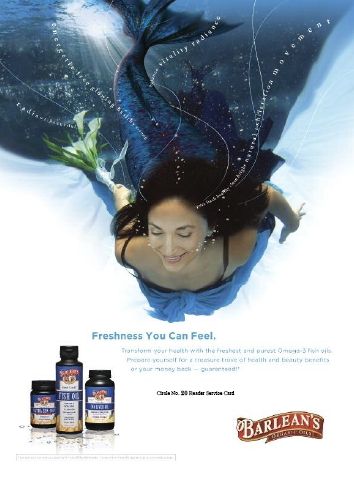 To emphasize his point, Anderson cites research indicating that how much omega-3 fatty acids are in red blood cell membranes can help determine one’s risk of having coronary heart disease (2). The more omega-3s, the lower the risk.
To emphasize his point, Anderson cites research indicating that how much omega-3 fatty acids are in red blood cell membranes can help determine one’s risk of having coronary heart disease (2). The more omega-3s, the lower the risk.
Here’s the link to krill oil: this oil offers DHA and EPA, most of which are bound as phospholipids (while just some are bound by triglycerides). In traditional fish oil, DHA and EPA are bound as triglycerides. Many krill oil suppliers speak of why this is important. For instance, Enzymotec uses a proprietary technique to make its Pure Krill Oil that the firm says delivers large amounts of phospholipids, DHA/EPA and astaxanthin from krill biomass only. According to Elzaphan Hotam, CEO of Enzymotec USA Inc., Morristown, NJ, using phospholipids as a natural delivery system is advantageous because it seems like the body readily absorbs and uses them efficiently. “Not all fats are the same,” Hotam explains. Because of the body’s natural inclination to absorb and use phospholipids efficiently, the omega-3s in krill oil are better absorbed by the body, leading to enhanced potency and bioavailability, says Hotam. He notes, “We leverage the science and bring the ingredients to the next level.”
Michael Corrigan, consultant, formulator and educator for LifeSeasons, Copper Canyon, TX, further explains the cell membrane–phospholipids connection. “Without proper balance of phospholipids in the cell membrane, it can’t reach out and take through osmotic interchange anything in the bloodstream. It won’t get rid of waste properly. It looses fluid too quickly, so it dries out. It doesn’t get nerve signals as easily. And, it has trouble figuring out to which hormones to react,” he states.
Anderson adds that a large portion of the phospholipids in krill is phosphatidylcholine, “an important structural component of cellular membranes and participates in fatty acid transport in blood and across membranes. Because fatty acids are water insoluble, they cannot be transported in their free form in blood; instead, lipoprotein assemblages act as a vehicle for fatty acid transport in blood,” he explains.
Rudi E. Moerck, Ph.D., president and CEO at Valensa, Eustis, FL, feels that some of the most exciting emerging research speaks to krill oil’s excellent ability to deliver EPA and DHA. “It is too early to judge whether the EPA and DHA in krill oil seems more potent than fish oil due to the high levels of emulsifying phospholipids found in krill oil or because of some advantaged transport mechanism related specifically to phospholipid-bound EPA and DHA,” he feels.
Also noting the phospholipid link is Cheryl Myers, chief of scientific affairs and education at EuroPharma, Inc., Green Bay, WI, who cites a study in which researchers found salmon oil (specifically extracted from the head) is very rich in DHA/EPA in the phospholipid form. The phospholipidrich salmon oil increased DHA/EPA absorption rates 50 times better than other products, she says, citing 2007 research (3).
Corrigan explains that individuals who are poor fatty acid metabolizers (atopic patients) tend to have a host of health issues like learning disabilities, poor sleep patterns, poor night vision, skin issues, allergies, poor kidney function and poor immune system function. “Because they don’t metabolize essential fatty acids properly, all their tissues are functioning improperly…They’re not getting the DHA they need,” he states. Since krill is said to improve DHA delivery, this supplement may be especially suitable for them and others with poor nutrient absorption like the elderly.
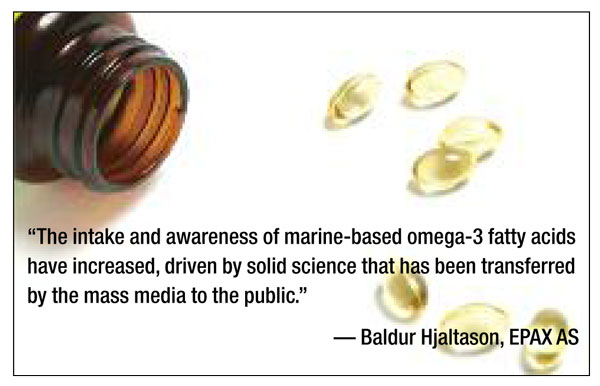 Wael Massrieh, Ph.D., director of R&D at Neptune Technologies & Bioressources Inc., Laval, QC, Canada, points out another important aspect of the why having phopholipids as the omega-3 carriers is so beneficial: “[Phospholipids] are one of the principle constituents of high-density lipoprotein (good cholesterol) and play, as such, an important role in modulating cholesterol efflux making them beneficial for heart health. They also comprise 70% of the brain making them beneficial for mental health.” According to Massrieh, one gram of his company’s branded krill oil (NKO) was shown in a clinical study of 120 patients to reduce triglycerides (down 11%) and LDL cholesterol (down 32%) while increasing HDL (up 44%) after 12 weeks (4). These percentages improved as the dosage increased.
Wael Massrieh, Ph.D., director of R&D at Neptune Technologies & Bioressources Inc., Laval, QC, Canada, points out another important aspect of the why having phopholipids as the omega-3 carriers is so beneficial: “[Phospholipids] are one of the principle constituents of high-density lipoprotein (good cholesterol) and play, as such, an important role in modulating cholesterol efflux making them beneficial for heart health. They also comprise 70% of the brain making them beneficial for mental health.” According to Massrieh, one gram of his company’s branded krill oil (NKO) was shown in a clinical study of 120 patients to reduce triglycerides (down 11%) and LDL cholesterol (down 32%) while increasing HDL (up 44%) after 12 weeks (4). These percentages improved as the dosage increased.
Before proceeding, it should be noted that much research supports the benefits of EPA and DHA in the triglyceride form. The lion’s share of EPA/DHA research is on traditional fish oil and, according to information provided by Stuart Tomc, CNHP, national educator Nordic Naturals, Watsonville, CA, the triglyceride form is effectively incorporated into plasma lipids, is very bioavailable, is stable and is offered at a better price point than other products (like prescription fish oil, which isn’t in the triglyceride form). For more on this topic, check out the later section entitled, “Prescription Fish Oil: A Red Herring?”
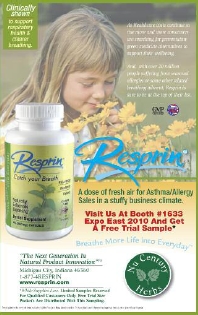 Now, getting back to the biology of fatty acids, which also affects inflammation. Fatty acids produce resolvins and protectins. “These compounds work in such a way that ‘resolves’ inflammation at a critical point—before it causes too much damage in the body. Some inflammation is necessary, but too much is detrimental and can lead to the development of atherosclerosis. These omega-3–derived resolvins and protectins know just when to quell inflammation,” states Brenda Watson, president and founder of ReNew Life, Clearwater, FL.
Now, getting back to the biology of fatty acids, which also affects inflammation. Fatty acids produce resolvins and protectins. “These compounds work in such a way that ‘resolves’ inflammation at a critical point—before it causes too much damage in the body. Some inflammation is necessary, but too much is detrimental and can lead to the development of atherosclerosis. These omega-3–derived resolvins and protectins know just when to quell inflammation,” states Brenda Watson, president and founder of ReNew Life, Clearwater, FL.
According to Jolie Root LPN, LNC, education consultant at Carlson Laboratories, Arlington Heights, IL, EPA produces resolvin E1, which “appears to be able to dampen acute inflammatory processes before too much damage is done to healthy tissue.”
The ability of EPA/DHA to affect anti-inflammatory gene expression was tested in a Dutch study last year that involved 111 elderly individuals. According to the researcher s , consuming large amounts of EPA/DHA changed the expression of 1,040 genes, whereas those taking high-oleic acid sunf lower oil only had changes in 298 genes. These results are said to be the first to show that “intake of EPA+DHA for 26 weeks can alter the gene expression profiles of PBMCs to a more anti-inflammatory and anti-atherogenic status” (5).
This issue is part of the reason why nutrition experts say that omega-3s must be consumed in appropriate proportion to omega-6s. Resolvins and protectins cannot be made without omega-3s, and conversely, some omega-6s (like GLA when consumed in foods) are proinflammatory agents. It should be noted, however, that supplemental forms of GLA (like borage and evening primrose oil) don’t break down to the proinflammatory arachidonic acid (AA). Instead, they convert to DGLA, which is said to have benefits for everything from nerve pain to weight loss.
According to Joiner-Bey, new research speaks to another aspect of the inner workings of DHA: they are converted into neuroprotectins, which protect nerve tissue. “These are particularly critical in the brain because it has been determined that Alzheimer’s disease is associated with a deficit in neuroprotectins,” he explains, adding that these results and others on the link between EPA/DHA and mental health is “amazing” and “begs for more research.” Earlier this year, for instance, a study supported Joiner-Bey’s point about neuroprotectins, showing that DHA-derived neuroprotectins targeted brain cell death and promoted healthy neuro-signaling and overall brain health (6).
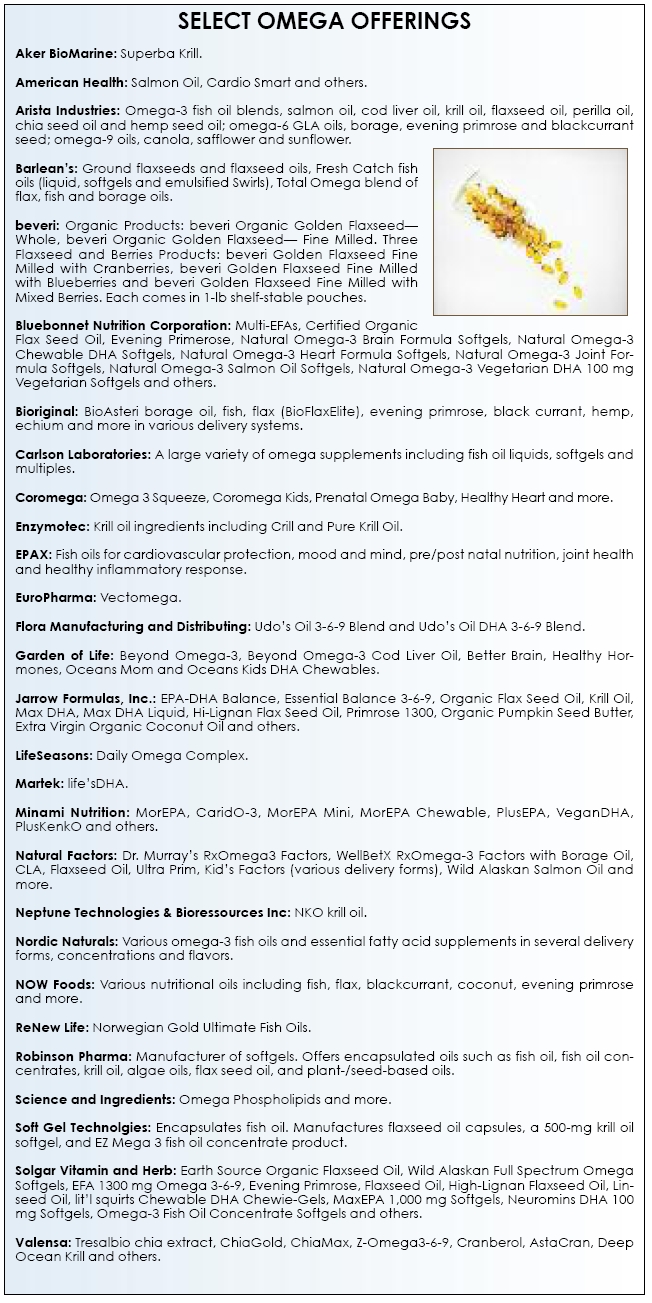 Key 2010 Research
Key 2010 Research
2010 saw an explosion of great research on omegas. States Mary Ann Siciliano, national sales manager for Arista Industries, Inc., Wilton, CT, “Any research that helps in understanding how EFAs benefit one’s health is very important as this educates and helps consumers know why they should take a particular supplement and what is beneficial for optimum health.”
One such area, as Joiner-Bey stated, is the link between omegas and cognitive function. Douglas Bibus, Ph.D., scientific advisor to The Coromega Company, Vista, CA, and lab director at www.Omega3Test.com, talks about some important cognitive health studies published this year. “An exciting new report has highlighted the significance of long-chain omega-3 for cognitive function in aging adults,” he says, speaking of an April 2010 study in which subjects (50–74 years old) with the highest levels of omega-3 in their blood were 33% less likely to develop Alzheimer’s disease and 38% less likely to develop dementia than those with lower levels. They were followed for nine years. Other research (7) pointed to the fact that omega-3s were a “safe alternative to anti-psychotic drugs for reducing the progression to psychotic disorders in young people,” he notes. The study also suggests that omega-3s may delay the onset of schizophrenia.
In another study, algal DHA improved memory in aging adults (8). Some 485 people ages 50 years or older with age-related memory decline were given 900 mg of DHA for six months. According to Bibus, the group had about a two-fold reduction in errors on memory and learning tests versus those who took placebo.
On the mood front, DHA and EPA were recently found to improve the quality of life in those with depression. The choice of words from the research team is compelling. Such supplementation “is efficacious in the amelioration of depressive symptoms and quality of life in the treatment of depressed elderly female patients” (9).
Brain and eye development in infants and children also benefit from omega-3s intake, according to researchers. “The necessary amount of DHA nursing/pregnant women need to take is twice that of a normal, healthy adult,” says Corrigan, to support a developing brain and central nervous system. That’s 200 mg of DHA. This amount is the minimum, and some experts believe women should take this extra amount while they are planning to conceive. Bibus explains that since some moms don’t take enough DHA before conception (and her DHA stockpile may be depleted during the last trimester when fetal brain is growing quickly), “DHA may not be transferred in adequate amounts,” he notes. “The risk for postpartum depression is also higher in moms with low DHA and for moms with multiparous births.” Some researchers believe there is a link between a DHA-rich diet and higher IQs in children.
Rakesh Kapoor, Ph.D., director of science and technology for Bioriginal Food & Science Corporation, Saskatoon, SK, Canada, highlights the DHA Intake and Measurement of Neural Development (DIAMOND) Study in which newborns were given DHA to see its affect on visual development and neural maturity (10). Another group received no DHA. “At the end of 12 months, DHA-supplemented infants had better indices of visual maturity (visual evoked potential) while non-supplemented infants had poor response. There was no difference in response between different doses of DHA, thus suggesting higher doses are not necessarily better,” he explains.
Other studies in children indicate that those with attention problems may benefit from DHA supplements (see this month’s Kids’ Nutrition feature on page 20).
Other newly published data, covered in this month’s research news section (page 10), deals with women’s health. It found that women taking fish oil had a 32% reduced risk of developing breast cancer. The large study population involved 35,016 post-menopausal women (11). States Root, “Ten years average use of fish oil supplements was suggestive of a reduced risk of ductal breast cancer.”
Also on the women’s health front, a new study indicates that women consuming an omega-3–rich diet were 22% less likely to develop endometriosis, while those eating a lot of trans-fatty acids had a 48% increased risk of developing this disorder (12).
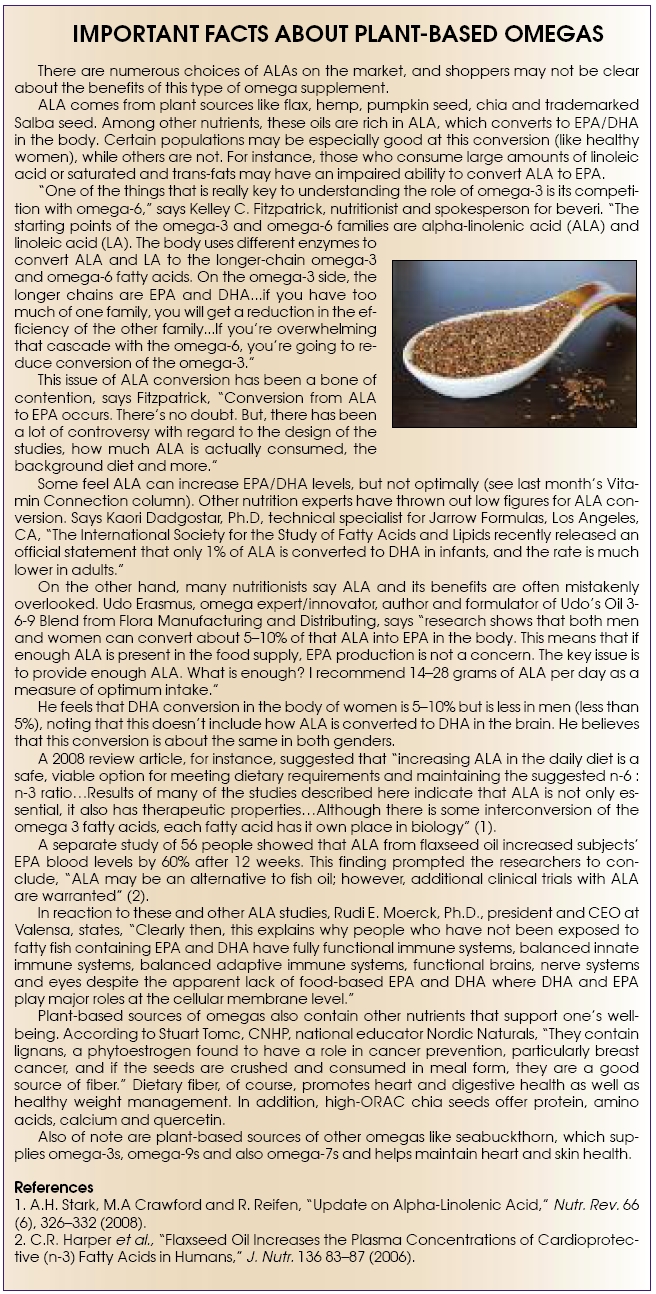
According to Kaori Dadgostar, Ph.D., technical specialist for Jarrow Formulas, Los Angeles, CA, some studies indicate that ALA, the omega-3 found in plant sources like chia, hemp, pumpkinseed and flax may also show some potential in the area of prostate cancer (13). She states, “Although the relationship between ALA intake and prostate cancer risk have been inconsistent, recent meta-analyses have shown that more than 1.5g/day of ALA supplementation can decrease the risk of prostate cancer compared to the risk in people who consumed less.”
 Some very interesting research on obesity just published this summer speaks to the importance of proper omega-3/omega- 6 ratio. This small animal study indicated that chronic intake of linoleic acid (LA, present in soy, canola and sunflower oil) combined with a deficiency in ALA increases obesity and type-2 diabetes. And, animals fed a low-ALA/high-LA diet even passed down the obesity trait to their offspring (14).
Some very interesting research on obesity just published this summer speaks to the importance of proper omega-3/omega- 6 ratio. This small animal study indicated that chronic intake of linoleic acid (LA, present in soy, canola and sunflower oil) combined with a deficiency in ALA increases obesity and type-2 diabetes. And, animals fed a low-ALA/high-LA diet even passed down the obesity trait to their offspring (14).
Other groups find that DHA-rich diets may help improve eyesight in those with age-related macular degeneration (15).
Of course, the anti-inflammatory benefits of omega-3s have also been studied for joint health. While much of the research is on fish oil and flaxseed, a 2010 article indicates that krill oil may help those with rheumatoid arthritis (16). Massrieh of Neptune adds that krill also contain the antioxidant astaxanthin, which may help reduce inflammation in joint health.
A large amount of research supports the benefits of omega-3s for various aspects of heart health. And, according to Chad Kingwell, marketing coordinator for Bioriginal, “ALA has been shown to reduce blood cholesterol, triglyceride levels and the risk of stroke.”
Moerck adds, “Results from prospective studies with 45,000 men over a 14-year per iod concluded that for every one gram/day increase in dietary ALA, there was an associated 16% reduction in the risk of cardiovascular disease (CVD). In a study of 76,000 women over a 10-year period, 1.4 gm/day of ALA provided a 45% reduction in the risk of CVD when compared to the control group at 0.7 gm/d of ALA.”
Recently, the bank of cardiovascular literature was expanded with DHA/EPA studies showing that EPA plus statins lowered triglycerides and bad cholesterol (17) and taking EPA/DHA lowered the risk of having a fatal coronary heart disease event (18).
The heart health benefits of omega-3s are so substantiated that the medical and pharmaceutical industries have taken notice. This leads us to our next 2010 trend: prescription fish oil.
 Prescription Fish Oil: A Red Herring?
Prescription Fish Oil: A Red Herring?
Many industry members have likely seen the television commercials for pre-scription fish oil that is said to offer a superior product than what is sold in nutrition stores. The popularity of one such drug, GlaxoSmithKline (GSK)’s Lovaza, is unmistakable. Last year, it garnered about $758 million in U.S. sales and nearly $1 billion worldwide (according to The Nutrition Business Journal). One may wonder whether the nutrition industry should see this success as a threat.
In fact, fish oil experts consider the competition as a positive. First, it suggests that the medical community accepts the meaningful benefits that omegas have for heart health, and other indications may be on the way. Says EPAX’s Hjaltason, “Medical doctors as well as healthcare professionals have now been educated about the heart health benefits of omega-3 fatty acids, especially EPA and DHA. It is therefore no surprise that around half of those who now take omega-3 fatty acids are doing it because their doctor recommended it.”
This extra validation may help shoppers on the fence about buying omegas feel more comfortable buying them— which could have some spillover to nutrition aisles. At present, Lovaza is only recommended for those needing to lower high triglycerides. Those who want to take fish oil for other purposes (like skin or joint health) may seek out a supplement form of fish oil.
Here’s another bonus of the prescription product: increased consumer awareness of the health benefits of omega-3s. “Pharmaceutical companies have invested heavily in advertising the benefits of fish oil to the general public,” says Kingwell. “This increased exposure is beneficial to the omega-3 industry as a whole, helping to further increase consumer awareness and validate the use of omega-3s in clinical applications.”
But, the overwhelming consensus among those interviewed for this piece is that the prescription form doesn’t offer anything special to shoppers that they cannot find in a nutrition store. “We laugh to ourselves when buyers and customers show us the leading prescription’s advertisements that claim, ‘You can’t find this in your local health food store!’ because you can!” exclaims Steven Benoit, national sales and education coordinator for Minami Nutrition USA, New York, NY.
At first blush, prescription fish oil may seem like a great product to a layperson. GSK boasts on its Lovaza Web site that each capsule delivers 465 mg EPA and 375 mg DHA. This amount, the manufacturer claims, is far superior to the amount that a typical fish oil supplies.
But, more isn’t necessarily better. This is an exceptionally large dose of omegas. According to Steve Holtby, president and CEO of Soft Gel Technologies, Inc., Los Angeles, CA, “This dose may be dangerous for people without having extremely high triglyceride levels.”
Myers of EuroPharma notes that there may be a price to pay for the process the drug company uses to boos t the EPA/DHA make the product: destabilization of the oil. “Destabilized oils have accelerated rancidity. Rancidity creates a very hard-to-quench free radical called a hydroxyl free radical, so using a rancid fish oil gives some benefit from the omega-3s, but also some damage from the oxidation process associated with rancidity,” she explains.
As an aside, one can beg to differ with GSK’s comparison of doses. Industry manufacturers do offer ultra-omega formulas that provide much higher doses of EPA/DHA than a typical formula. For instance, Minami Nutrition CardiO-3 product offers 635 mg of EPA and 194 mg of DHA per capsule. Realistically, shoppers whose physicians suggest taking high doses of fish oil can do so with high DHA/EPA supplemental fish oil—and without taking 14 softgels. Minami Nutrition USA, for instance, achieves this high content, says Benoit, with a hexane-free patented extract process that uses 400% less heat than standard molecular distillation processes.
Moreover, the overall cost of the prescription is more than a high-quality supplement. For instance, 100 capsules of Lovaza were priced at $130–150 for a one -month supply on www. epharmacies.com, which is significantly more than a similarly sized bottle of fish oil at a nutrition store. Says Jordan Rubin, founder and CEO of Garden of Life, West Palm Beach, FL, “If the fish oil supplement is pharmaceutical grade, it can be as much as seven times less expensive as the prescription, so that’s the big benefit.”
Watson of ReNew Life, agrees, noting, “This is extremely important for those on a budget as well as people who do not have health insurance.”
Another problem with prescription fish oils is that they are not enteric coated, says Corrigan, which points to pharma’s inexperience with fish oils. He says, “They just haven’t spent enough time in the market to know that there’s a problem with kickback.”
Another issue to consider is that the two prescription and supplemental fish oils are geared toward two different audiences. Says Sheila Gautier, scientific affairs, Martek, Columbia, MD, “The prescription products are fish oil in a form that can provide much larger quantities of the fatty acids in a smaller capsule size. These levels of fatty acid are specifically for those individuals under the care of their physician. Over-the-counter products contain lower levels of these fatty acids and are designed to meet the needs of a healthy population.”
Evidence of the fact of these two different spheres comes from Kenn Israel, vice president of marketing at Robinson Pharma, Santa Ana, CA, who says, “While Lovaza has grown to a billiondollar drug, omega-3 (EPA and DHA, specifically) continue unprecedented growth in supplement and food form.” This means that core nutrition store shoppers aren’t likely to leave their omega supplements for prescriptions and new clientele won’t necessarily go to their doctor for a prescription first.
Dadgostar isn’t worried about the fish oil supplement market withering away either. She states, “Non-prescription fish oil supplements still play the leading role in providing EFAs to the general public.”
While industry members indicate that we shouldn’t be scared of prescription fish oil, there is perhaps one new commercial development that is unsettling. Apparently, a genetically modified omega-3 is in the pipeline, and researchers are investigating its benefits (19). According to Bibus, the omega is promoted as a sustainable option to fish oil, which he states is “an interesting concept, because if one does the proper research, he or she will find that fish oil produced for human consumption is hardly an unsustainable practice.”
Pharmaceutical fish oil does have the regulations on its side, which consumers may feel spells quality and safety. Says Dadgostar, “Although GMP guidelines require all supplements to go through the same levels of quality control as prescription fish oil, consumers must make sure that the supplements that they are getting are from compliant companies…All quality control data should be available upon request, and obtaining these data may help people choose the right supplements.”
In your store: prescription versus supplements. If you haven’t already experienced it, there’s a chance shoppers may come to you wi th quest ions about whether there’s a difference between supplemental and prescription fish oil. What should you say?
First, it’s extremely important to be careful how you handle these questions. As you know, retailers aren’t physicians and should never make the mistake of dispelling medical advice. Ultimately, conversations about whether or not to take a prescription should occur between an individual and his/her physician. But, there is some appropriate information retailers can share with their clientele. Says Israel, “A retailer needs to be careful not to say ‘don’t take a prescribed medicine’ because to do so is to practice medicine, likely without a license! This said—the retailer can educate the customer on the benefits of a high-quality fish oil concentrate that delivers the same level of EPA and DHA as a prescription product.”
Also, they can speak about the physical differences in prescription versus supplemented fish oils. According to Tomc, two forms of fish oil are available on the market: triglyceride and ethyl ester (EE) forms. He explains that his company formulates with the TG form. “That’s because the EE form is a ‘new to nature’ fat with only 18 years of history in the human diet, whereas the TG form is the form found in nature, in the fish we have eaten for thousands of years. Research has shown that the TG form may be more effectively incorporated into plasma lipids than omega-3s (EPA and DHA) from EE-form fish oil,” he states. Tomc also believes that the TG form offers better stability and bioavailability.
The EE form may be found in the prescription form, but one industry company also offers a soft gel that contains an EE concentrate (EZ Mega 3 from Soft Gel Technologies). According to the company, this enables them to create a concentrated form of EPA/DHA that enables them to put larger quantities of omega-3s in smaller capsules. But, the product differs from other EE forms in that it is stabilized with various agents (ascorbyl palmitate, tocopherols, citric acid and contains rosemary extract) whereas the prescription product doesn’t. Says Holtby, “FDA rules don’t allow the addition of antioxidants to Lovaza’s fish oil, which makes it more susceptible to rancidity. The side effect of unpleasant burping is attributed to rancid oil—no matter how pure it originally was.”
Last, stores can talk about the purity and freshness of their products. Advises Israel, “Pre-arming oneself with full certificates of analysis demonstrating the potency and purity and freshness of the product they want to sell is a good idea.”
The purity and freshness of omegas may in fact be on the minds of many consumers, as this issue was front and center in the world of nutrition news over the past few months. Says Holtby, “Even though Lovaza can certainly help lower triglyceride levels, there is no clinical evidence that it is any ‘purer’ or more effective than a comparable, non-prescription fish oil supplement.”
In fact, many nutritional companies take purity and sourcing as a matter of pride, and have much to say about it. Next month, the second part of this article will cover issues about purity/sustainability and some of the newest innovations in the omegas industry. WF
References
1. R. Farzaneh-Far, et al., “Association of Marine Omega-3 Fatty Acid Levels with Telomeric Aging in Patients with Coronary Heart Disease,” JAMA303 (3), 250–257 (2010).
2. W.S. Harris and C. Von Schacky, “The Omega-3 Index: A New Risk Factor for Death from Coronary Heart Disease?” Prev. Med. 39 (1), 212–220 (2004).
3. M. Parmentier, et al., “Polar Lipids: n-3 PUFA Carriers for Membranes and the Brain: Nutritional Interest and Emerging Processes, “Oléagineux, Corps Gras, Lipides 14 (3), 224–229 (2007).
4. R. Bunea, K. El Farrah and L. Deutsch, ”Evaluation of the Effects of Neptune Krill Oil on the Clinical Course of Hyperlipidemia,” Alt. Med. Rev. 9 (4), 420–428 (2004).
5. M. Bouwens, “Fish-Oil Supplementation Induces Anti-Inflammatory Gene Expression Profiles in Human Blood Mononuclear Cells,” Am. J. Clin. Nutr. 90 (2), 415–424 (2009).
6. R. Palacios-Pelaez, W.J. Lukiw and N.G. Bazan, “Omega-3 Essential Fatty Acids Modulate Initiation and Progression of Neurodegenerative Disease,” Mol. Neurobiol. 41 (2–3), 367–374 (2010).
7. G.P. Amminger, et al., “Long-Chain Omega-3 Fatty Acids for Indicated Prevention of Psychotic Disorders: A Randomized, Placebo-Controlled Trial,” Arch. Gen. Psychiatry 67 (2), 146–154 (2010).
8. K.Yurko-Mauro, et al., “Results of the MIDAS Trial: Effects of Docosahexaenoic Acid on Physiological and Safety Parameters in Age-Related Cognitive Decline,” Alzheimer’s & Dementia 5 (4), 84 (2009).
9. M. Rondanelli, “Effect of Omega-3 Fatty Acids Supplementation on Depressive Symptoms and on Health-Related Quality of Life in the Treatment of Elderly Women with Depression: A Double-Blind, Placebo-Controlled, Randomized Clinical Trial,” J. Am. Coll. Nutr. 29 (1), 55–64 (2010).
10. E.E. Birch, et al., “The DIAMOND (DHA Intake and Measurement of Neural Development) Study: A Double-Masked, Randomized Controlled Clinical Trial of the Maturation of Infant Visual Acuity as a Function of the Dietary Level of Docosahexaenoic Acid,” Am. J. Clin. Nutr. 91 (4), 848–859 (2010).
11. T.M. Brasky et al., “Specialty Supplements and Breast Cancer Risk in the VITamins And Lifestyle (VITAL) Cohort,” Cancer Epidemiol. Biomarkers Prev. 19 (7), 1696–1708 (2010).
12. S.A. Missmer, et al., Hum. Reprod., Advance Access published on March 23, 2010
13. M. Carayol, P. Grosclaude, C. Delpierre, “Prospective Studies of Dietary Alpha-Linolenic Acid Intake and Prostate Cancer Risk: A Meta-Analysis,” Cancer Causes Contr. 21(3): 347–355 (2010).
14. F. Massiera, et al., “A Western-Like Fat Diet is Sufficient to Induce a Gradual Enhancement in Fat Mass Over Generations,” J. Lip. Res. 51 (8), 2352 (2010).
15. C-J Chiu, “Does Eating Particular Diets Alter Risk of Age-Related Macular Degeneration in Users of the Age-Related Eye Disease Study Supplements?” Br. J. Ophthalmol. 93 (9), 1241–1246 (2010).
16. M. Ierna, et al., “Supplementation of Diet with Krill Oil Protects against Experimental Rheumatoid Arthritis,” BMC Musculosk. Dis. 11 (136), 1471–1474 (2010).
17. S. Oikawa, “Suppressive Effect of EPA on the Incidence of Coronary Events in Hypercholesterolemia with Impaired Glucose Metabolism: Sub-Analysis of the Japan EPA Lipid Intervention Study (JELIS),” Atherosclerosis, 206 (2), 535–559 (2009).
18. J. de Goede, et al., :Marine (n-3) Fatty Acids, Fish Consumption, and the 10-Year Risk of Fatal and Nonfatal Coronary Heart Disease in a Large Population of Dutch Adults with a Low Fish Intake,” J. Nutr. 140 (5), 1023–1028 (2010).
19. M. Venegas-Caleron, et al., “An Alternative to Fish Oils: Metabolic Engineering of Oil-Seed Crops to Produce Omega-3 Long-Chain Polyunsaturated Fatty Acids,” Prog. Lipid Res. 49 (2), 108–119 (2010).
Published in WholeFoods Magazine, September 2010

